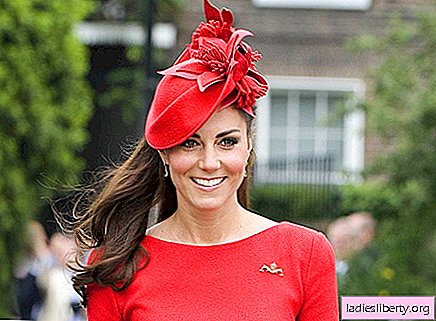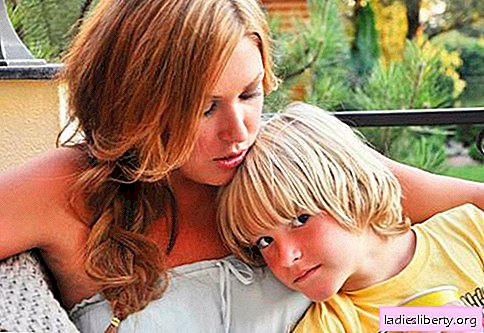
Astrantia got its name because of the star shape of its flowers (in Latin aster means star). For the same reason, its popular name is a star. The area of its natural growth is Europe and Asia Minor.
The plant belongs to the Umbrella family (the form of inflorescences forms an "umbrella"). Astrantia, planting and caring for which is not difficult, is known for its unpretentiousness and long spectacular flowering. In addition, she is a wonderful honey plant that attracts bees. Astrantia flowers are collected in an inflorescence-umbrella.
Types and varieties of astrantia
Astrantia has about a dozen species, of which the following are grown in floriculture:
• large astrantia - a sprawling plant up to 0.7 m high. Inflorescences reach a diameter of up to 5 cm. The most popular varieties: Moulin Rouge, Primadonna, Ruby Wedding, Rosea, Snowstar;
• small astrantia - It got its name not for its growth (grows up to 1 m in height), but for the small size of pale pink flowers. The flowering period lasts from July to September;
• astrantia carniol - perennial with palmate-divided leaves. A popular variety is Rubra;
• astrantia is the greatest - a compact plant up to 0.7 m high. Its leaves are tripartite. It blooms in August - September.
Features of astrantia landing
The star is photophilous, but it tolerates partial shade. Therefore, it is often planted under trees or next to shrubs.
The intensity of the color of the flowers depends on the lighting: the more sunlight, the brighter the color.
Soil this plant prefers loose fertile loam. Sandy soils do not suit her; in them, before planting astrantia, clay and humus must first be added.
Astrantia cultivation from seeds
Zvezdovka is easily propagated by self-seeding. Seeds that fall into the ground undergo a natural stratification. In spring, the emerged seedlings will only need to be thinned out.
If you use seeds purchased in a store, then at home they will have to be stratified artificially. For this, the seeds are stored for 2 months on the bottom shelf of the refrigerator. In March, they are sown in boxes with loose fertile soil (peat, turf land, humus in a ratio of 1: 1: 1). The crops are moistened, covered with a film or glass and kept at room temperature + 20-23 ° C. When shoots appear (2-3 weeks after sowing), the coating is removed, the boxes are rearranged closer to the window to provide the plants with sufficient lighting.

After emergence, the shelter from the container with landings is removed
Thick plantings are thinned out, leaving between 7-10 cm seedlings.
When the sprouts acquire the first pair of true leaves, dive into separate pots.
Further care for astrantia seedlings is simple: watering as necessary, loosening the soil to increase soil aeration.
7-10 days before the seedlings are planted in open ground, the hardening process begins, taking them every day to the balcony or terrace with a gradual increase in the duration of the procedure.
The timing of transplanting seedlings to flower beds depends on the weather conditions of the region and vary from the last decade of May to the second week of June. Such plants will bloom in the third year of vegetation.
Growing astrantia by dividing the bush and rhizome
The vegetative method allows you to save varietal characteristics of the mother plants, which is difficult to achieve with seed cultivation. The division of the bush is used when propagating rare and valuable varieties of astrantia. In garden shops, rhizomes of rhizomes (both open type and closed) are mainly sold. In the first case, it is important to visually assess the state of the root: it must be healthy, elastic to the touch, without the presence of putrefactive spots.
If the plant is in a container, then its state of health is assessed by the aerial parts (leaf turgor, their color, absence of damage).
When buying rhizomes in the spring, they are planted immediately after acquisition. If this happened in the winter, then the roots are planted in pots with a light and nutritious soil and left until spring at home.
The division of the bush is carried out in early spring before the start of the growing season or in autumn after cutting the tops. For this, the plant is dug up, divided into parts so that each split has 2-3 growth buds on the rhizome.
How to plant astrantia
When planting astrantia, it should be borne in mind that this plant can live in a permanent place for several years.
Depending on the type of cultivar, the diameter of the bush across can reach up to 0.5 m.
Therefore, if it is planned to plant this flower in rabatki or borders, then the distance between the bushes should be at least 0.3-0.5 m.
The holes are made so deep that the roots fit freely.
Humus or compost is added to the planting pits, a plant is planted, the earth is compacted and watered abundantly.
Secrets of Astrania Care
Astrantia is one of the unpretentious garden plants. Care for it is minimal. With periodic rains in the summer, you can water the star once a week, as it is drought-resistant.
On a note! If you keep the soil under astrantia slightly moist, then after the first flowering, the plant will bloom again.
The soil under the bushes after rains and irrigation is loosened to provide aeration of the roots.
When growing astrantia on fertile lands, it is enough to feed it once (after snow melting in spring) with complex mineral fertilizers. If the soil in the flower garden is poor and depleted, then in order to stimulate repeated flowering, plants are fed with phosphorus-potassium fertilizers in July.
Important! Any fertilizer is applied only after watering, otherwise a chemical burn of the roots is likely.
In order for the star to bloom again, cut off the faded inflorescences immediately. This pruning stimulates the formation of new buds.
Once every 5-6 years of astrantia, a rejuvenating transplant is needed, which is optimally timed for vegetative propagation (division of the bush). By this age, the appearance of this perennial deteriorates, the flowering intensity decreases.
If you want to collect your own seeds, then the largest inflorescence should be left on the bush. After withering, put on a gauze bag so that the seeds do not crumble. When they ripen, the stem is cut off with it, dried in a dry place. Seeds are stored in a paper bag.
In the autumn, after the end of the growing season, the aerial part is cut off almost under the root, leaving stumps 2-3 cm high. For winter, adult star-bearing bushes do not require shelter. Only young plants are covered with spruce branches.
Pests and astrantia diseases
Astrantia is resistant to many diseases. However, with improper care, it can become sick. So, with excessive watering and tight planting, its bushes are affected by rot of fungal etiology. Upon detection, damaged stems are removed, plants are sprayed with fungicidal solution (Topaz, Fundazole) They spill the ground under the plant.
Of the pests, astrance at a young age can be attacked by slugs and snails. To combat them, they arrange special traps (cans of beer dug into the ground, the smell of which attracts slugs), create mechanical obstacles (brick crumb scattered under the bushes), are collected manually. If the invasion of slugs is massive, then chemical preparations are used (for example, Thunder).











